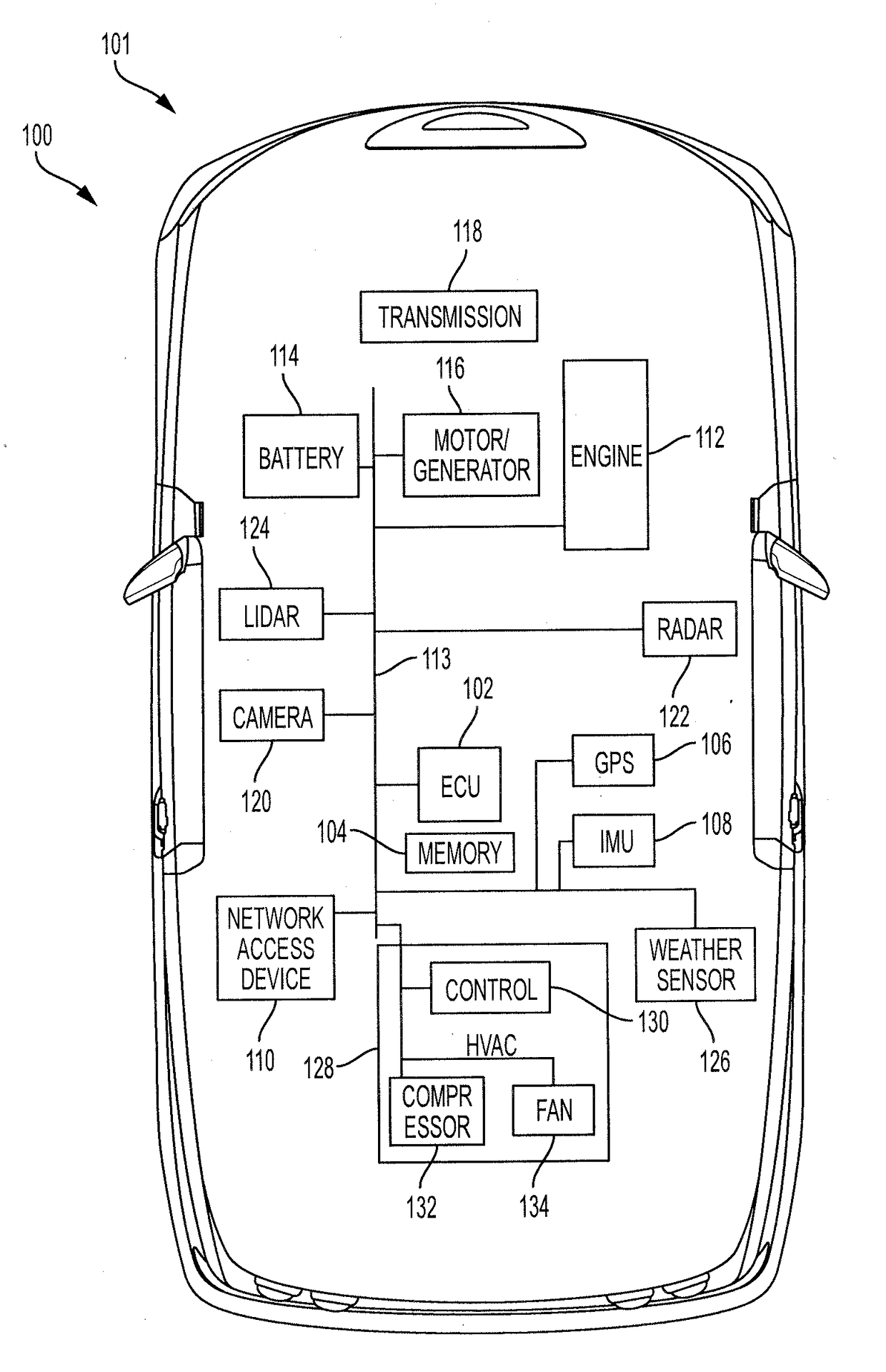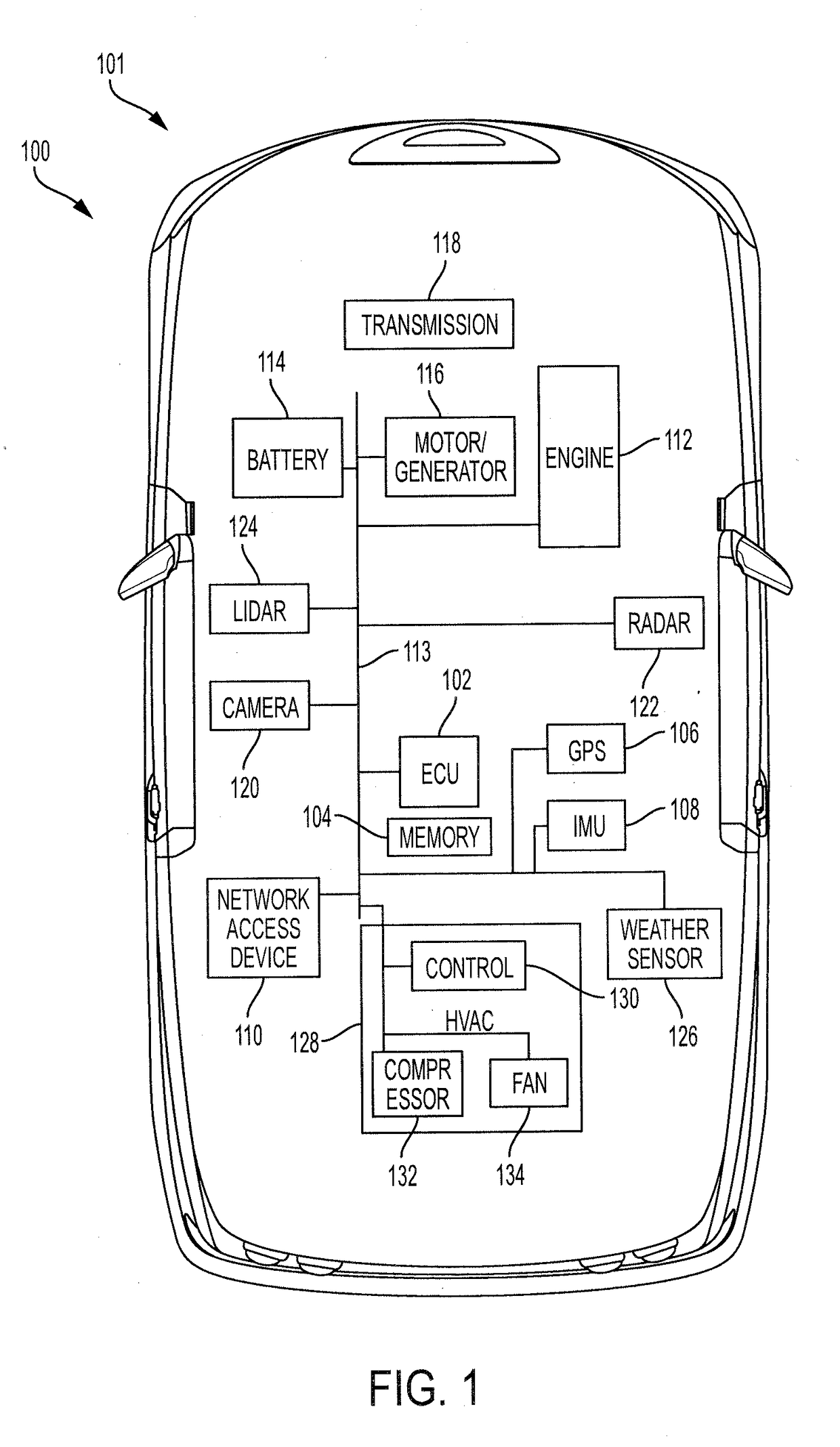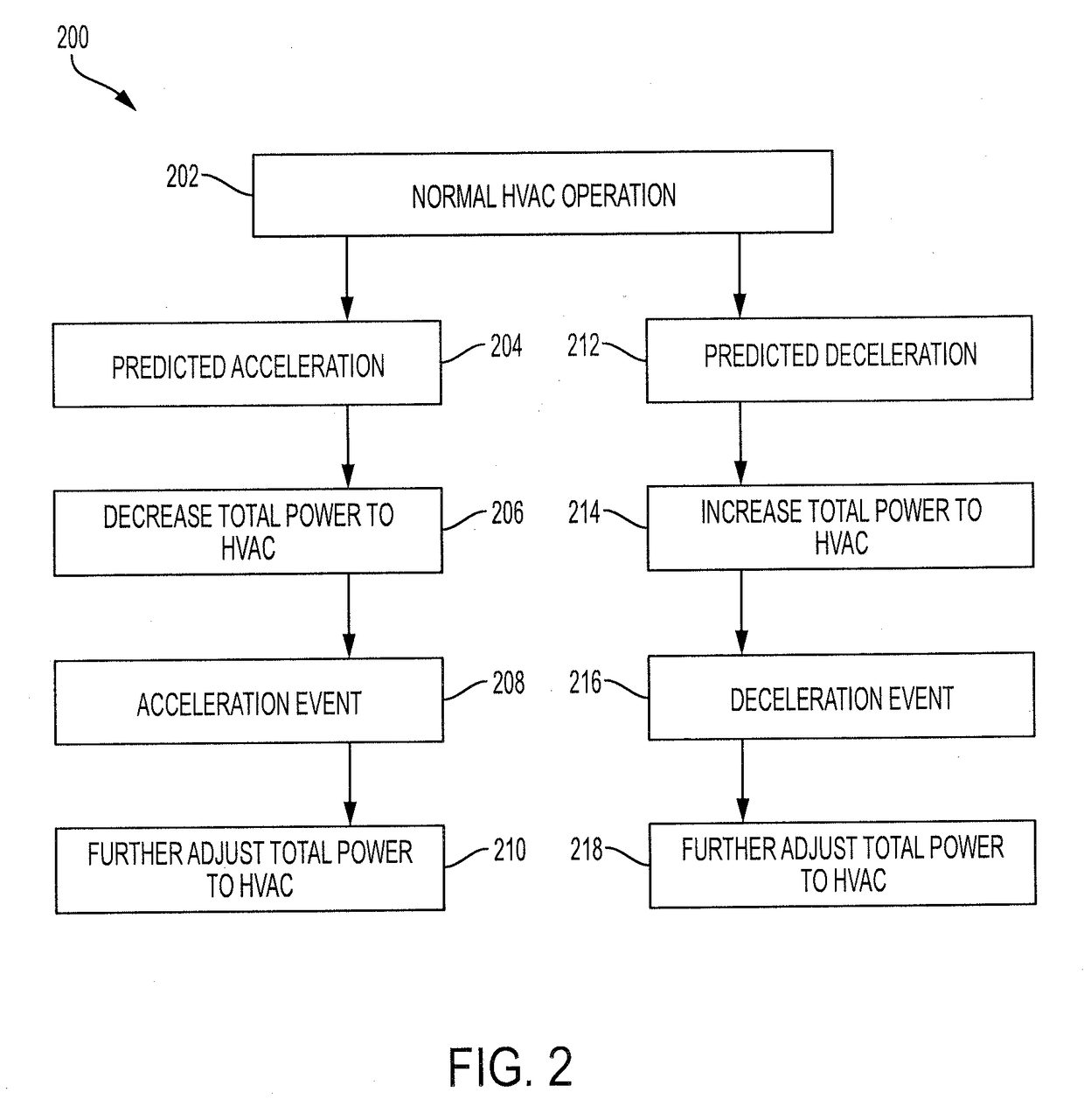Efficient HVAC operation by predictive control
a predictive control and hvac technology, applied in the direction of road transportation emission reduction, vehicle heating/cooling devices, vehicle components, etc., can solve the problems of increasing or decreasing the state of charge of batteries, and achieve the effect of reducing total power provided, increasing power, and reducing power
- Summary
- Abstract
- Description
- Claims
- Application Information
AI Technical Summary
Benefits of technology
Problems solved by technology
Method used
Image
Examples
Embodiment Construction
[0013]The present disclosure describes systems and methods for controlling power to a heating, ventilation, and air conditioning (HVAC) system based on predicted accelerations and decelerations of a vehicle. An exemplary system includes a power source, such as one or more of an engine or a motor-generator. The system further includes one or more sensors capable of detecting data that is usable to predict an upcoming acceleration or deceleration. The system further includes a HVAC system that includes a compressor and a fan. The system also includes an electronic control unit (ECU) that can predict whether the vehicle will accelerate or decelerate based on the detected data and that can increase or decrease an amount of power provided to the HVAC system based on the predicted acceleration or deceleration. For example, the ECU may decrease total power provided to the HVAC system to allow more power to be provided for propelling the vehicle in preparation of an upcoming acceleration. T...
PUM
 Login to View More
Login to View More Abstract
Description
Claims
Application Information
 Login to View More
Login to View More - R&D
- Intellectual Property
- Life Sciences
- Materials
- Tech Scout
- Unparalleled Data Quality
- Higher Quality Content
- 60% Fewer Hallucinations
Browse by: Latest US Patents, China's latest patents, Technical Efficacy Thesaurus, Application Domain, Technology Topic, Popular Technical Reports.
© 2025 PatSnap. All rights reserved.Legal|Privacy policy|Modern Slavery Act Transparency Statement|Sitemap|About US| Contact US: help@patsnap.com



